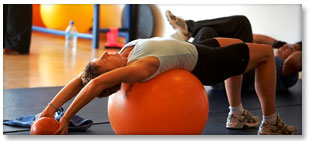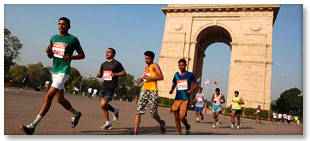 |
 General Training
General Training
- Dress right: It is recommended to wear a racing singlet, which will expose your arms and shoulders, allowing your body to perspire and cool itself down. Wearing the right clothing can also cut down on chaffing. Ensure that anything that touches your skin is not cotton. Though cotton is always comfortable to wear, it is not suitable for a marathon. Once you start sweating the cotton fabric will not dry easily and may make you uncomfortable when the wet cotton costume starts rubbing against your skin during the long run.
- Chose a right pair of shoes: You should be able to rely on your shoes. If you feel really confident in your shoes, that will make a big impact. And make sure to run the race in the same shoe model you trained in -- then you already know what the shoes feel like.
- Pace yourself: Run within your capabilities. Don’t be “pulled along” by stronger runners. Run at your own pace. It’s always a more pleasant experience when you can run negative split. This means running the second half of the race faster than the first half.
- Wear a watch: Monitor your running time with a watch.
- Swim your aches away: Skip running for a few days after the race, get a massage, and swim instead to loosen your muscles
- Take the "talk test" "The 'talk test' means running at a pace comfortable enough to converse with a training partner—but not so easy that you could hit the high notes in an Italian opera." —Runner's World editors
- Follow Road Rule Number One "Running against traffic allows the runner to be in command. Anyone who is alert and agile should be able to stay alive." —Dr. George Sheehan
- Warm up, then stretch "Try some light jogging or walking before you stretch, or stretch after you run. Stretching 'cold' muscles can cause more harm than good." —Runner's World editors
 |
 |
|


